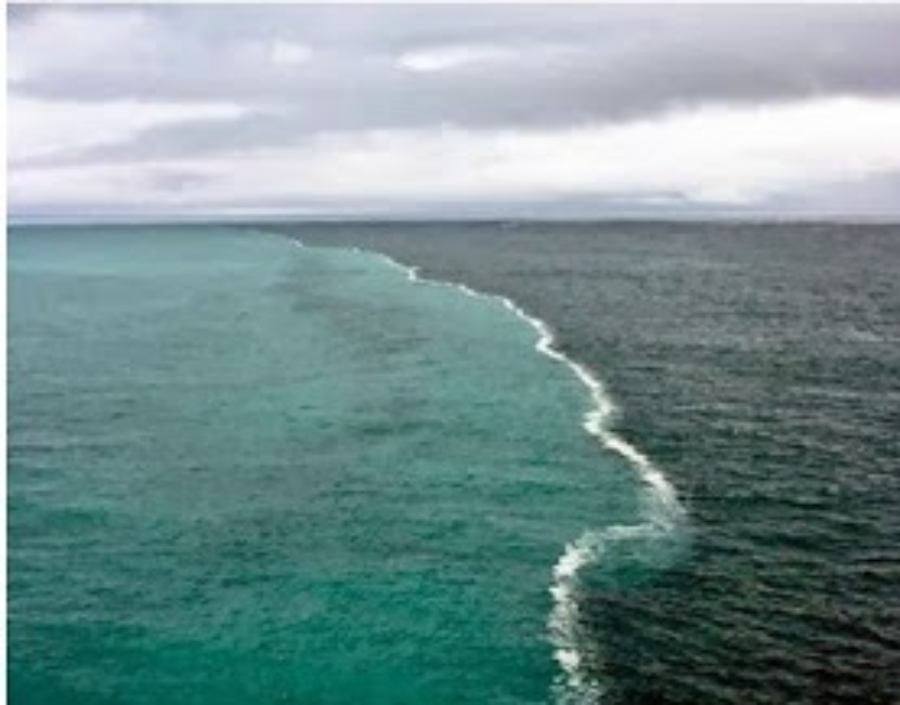

Hello everyone, today I've got a new tropic that will be beautiful and interesting.
Have you ever been to a place where two oceans meet but don't mix?
It's a breathtaking sight found all around the world. When two seas meet, their waters typically remain separated due to differences in temperature, salinity, and thickness. This natural phenomena creates a visible barrier, providing the impression of an invisible wall dividing the waters.
One famous place where this happens is where the Atlantic Ocean meets the Mediterranean Sea. This can be seen at the Strait of Gibraltar. The water from the Atlantic is colder, less salty, and less dense than the warmer, saltier water of the Mediterranean. When they meet, they form a distinct line where the two different types of water stay separate without mixing right away. Over time, they do blend, but the initial meeting shows a clear separation.
Another noteworthy location is in the Gulf of Alaska, where the Pacific Ocean meets glacier meltwater. The glacier water contains silt, making it look lighter and more opaque than the deep blue of the Pacific Ocean. This provides a noticeable visual contrast, with the lighter, sediment-filled water remaining distinct from the clearer ocean water. Again, they gradually mix, but the first touch is clearly visible.
Why is this happening?

The solution is based on water's physical characteristics. Temperature, salinity, and thickness all affect how water masses interact. When two bodies of water have differing temperatures, the warmer water is often less thick and floats on top of the colder, denser water. Saltiness also influences thickness: saltier water is denser than freshwater or less salty water. These discrepancies result in layers that are resistant to mixing, at least initially.
This phenomena is not restricted to oceans and seas. It can also be seen in rivers and lakes where freshwater and saltwater mix. For example, the Amazon River transports a large volume of freshwater into the Atlantic Ocean. The freshwater from the river forms a separate layer above the heavier, saltier ocean. The border between the two can extend far into the ocean, forming a distinct line where the river meets the sea.
Seeing these natural boundaries highlights our planet's immense complexity and beauty. It also demonstrates the fragile balance of the Earth's ecosystems, where even minor alterations in water qualities may have such severe consequences. Next time you hear about two oceans merging, remember the amazing science behind it and marvel at nature's exquisite plans.
